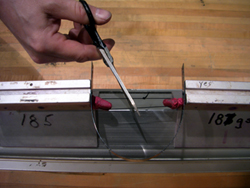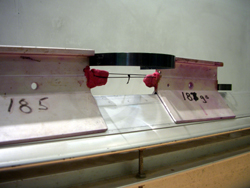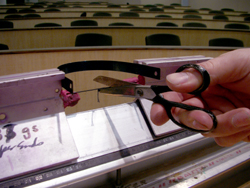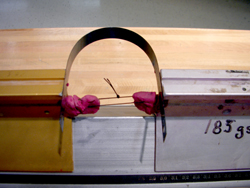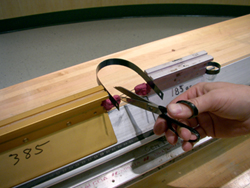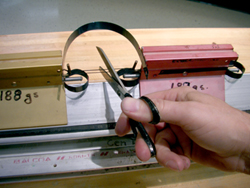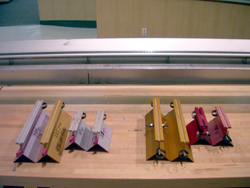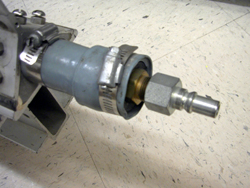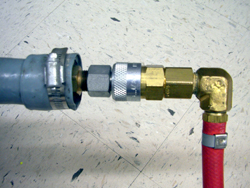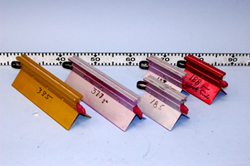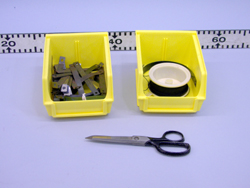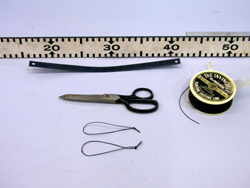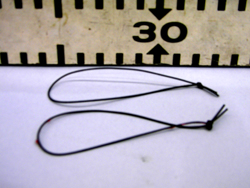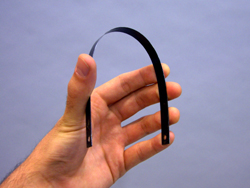Spring-Apart Air Track Gliders, 1N20.20
Topic and Concept:
pira200 Listed
Location:
Floor Item: ME, South Wall
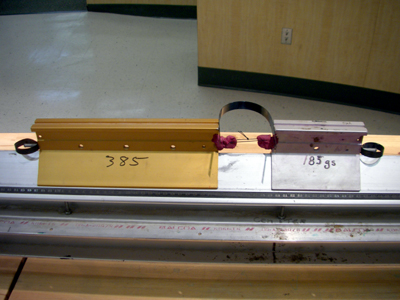
Abstract:
Using a scissors, cut a string holding a compressed spring between two air gliders initially at rest.
Equipment |
Location |
ID Number |
|
|
|
2.25 m Air Track |
Floor Item: ME, South Wall |
|
Small & Large Gliders |
ME, Bay A4, Shelf #4 |
|
Springs, Strings, & Scissors |
ME, Bay A4, Shelf #3 |
|
Air Hose |
Floor Item: ME, South Wall |
|
ME, Bay B1, Shelf #2 |
|
Important Setup Notes:
- This demonstration requires a supply of compressed air, permanent supplies located in rooms 2103, 2223, 2241.
Setup and Procedure:
Place air track on lecture bench, and connect the compressed air supply from the lower white panel of the Red & White Gas Cart to the track using an air hose.
- Place two gliders on the track, approximately centered.
- Turn on the air supply by opening the valve located on the lower white panel of the cart.
- If the gliders seem to slide in one direction, this is most likely due to the track being unlevel. Adjust the set screws until this no longer occurs. It is a good idea to do this ahead of time.
- Using a small section of string, make a tied loop, and hang it of a hanger on each glider so that the two gliders are connected.
- Carefully compress the spring into a U shape, and place it between the two gliders.
- When ready, cut the string with the scissors to release the potential energy.
Cautions, Warnings, or Safety Concerns:
- Make sure you are using compressed air (white panel) and NOT methane gas (red panel) which is extremely flammable!
- The spring can sometimes fly off toward the demonstrator's face. Either wear safety glasses or look away during cutting.
Discussion:
A basic principle of physics is the conservation of momentum, namely linear momentum in this case. Stated mathematically, Pinitial = Pfinal. In this demonstration, Pinitial = 0. Thus, the sum of the individual momenta of our gliders must be zero after the spring is released. Mathematically, Pglider 1 = -Pglider 2 <=> mglider 1 * vglider 1 = -mglider 2 * vglider 2. If using gliders of equal mass, the two gliders will have the same speed and travel in opposite directions. If using two gliders of unequal mass, the more massive glider will move slower than the less massive one.
This demonstration can be performed with both the inelastic and elastic gliders (see photos for string placement).
|
|
|
|
|
|
|
|
|
|
|
|
|
|
|
|
Videos:
References:
